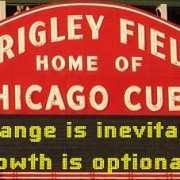Build Your Bottom Line: Accountable Culture in 6 Steps
Top-performing companies understand just how critical the workplace culture is to their success, so they’re intentional and systematic about how they create, drive, and describe their cultures. They know that culture is the “enabler”—or the “hobbler”—for new strategic plans and directions. The companies with the highest-performing teams and most robust bottom lines make accountability the centerpiece of their culture. Their slogan, no matter their business, is the equivalent of “We deliver!”
A culture that embraces accountability fuels employees to deliver every day, all day, and all year. Employees who are accountable are more engaged: they show up for work each day and work hard while they’re there. Accountability helps to reduce absenteeism, lower turnover, and minimize time wasted on activities such as social media and office gossip.
Your culture may be the culprit if your organization is not meeting goals and growing. How can you turn things around and start building an “accountable culture”? Here are six steps.
1 – Add accountability to your core competencies.
Competencies are the skills, behaviors and/or core values that set apart your company from you competitors. Include accountability as one of your core competencies for all employees in all positions and promote the competencies throughout the organization (e.g., on your website, on bulletin boards, in employee communications). This will help employees see just how important accountability is to the company.
2 – Hire for accountability.
Ask behavioral interviewing questions to elicit scenarios about job seekers’ experiences with accountability. Hire candidates who make accountability a habit. For example, ask
Tell me about a time when others abandoned a task or project, but you knew that it was important to complete.
Then, dig for additional context with these follow-up questions:
- What was the situation? Did this happen previously?
- What did you do, and how many others were involved?
- What was the outcome?
In many cases, past performance is the best predictor of future success.
3 – Onboard for accountability.
During onboarding, be sure to focus on the skills and behaviors expected across the organization and send a clear message:
Accountability counts in this company!
Here are some ideas:
- Tell stories about the lengths to which one or more employees have gone to ensure that projects or tasks were completed on time. To ensure the stories are passed down consistently and efficiently, consider creating a video series starring existing employees that future new hires may watch on demand.
- Talk about the rewards and recognition available for those who are accountable.
- Let new hires know that it’s a minimum performance standard. Do so by sharing job success factor documentation as a part of your standard employee onboarding workflow.
4 – Build accountability into your performance management.
If accountability is indeed a core competency, you should evaluate employees on how well they demonstrate it. Have managers address accountability during regular performance reviews and work with employees to continually improve accountability measures.
5 – Train managers to model accountability and to manage fairly to that outcome.
Micromanagement may deliver outcomes in the short-term, but managers need to learn how to delegate successfully so that they and their direct reports operate daily with an accountable mindset—no micromanagement needed!
But don’t just tell your managers to model it! As an employer, be accountable to providing regular management training that includes role playing scenarios in which successful delegation takes place.
6 – Reward accountability.
Being consistently accountable is demanding work! Lift up as examples those employees and managers who go above and beyond. Encourage those who demonstrate strong accountability with monetary or other rewards (extra paid days off, special parking privileges, a gift card, etc.).
As you build a culture of accountability, rate your people on a 1-10 scale in terms of the percentage of goals met well and on time. Year after year, work to move employees up the scale. What would happen if the average employee moved from a 6 to a 9? Your expenses wouldn’t change, but the increased productivity would translate into more profit!
If you intentionally raise the bar by defining accountability in your culture, incorporating accountability into your talent management programs, and providing manager and employee training around accountability, your highly engaged employees will likely sell more, deliver better customer service, produce higher-quality work, and solve problems faster and more effectively. All of these factors directly impact the bottom line.
Nancy S. Ahlrichs, SPHR, SHRM-SCP, is an author, columnist and national speaker. She is Chief Talent Officer at United Way of Central Indiana where accountability is a core value along with courage, respect and excellence.










